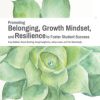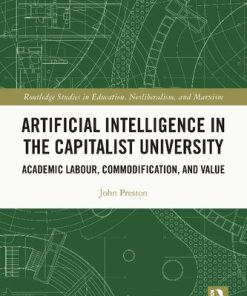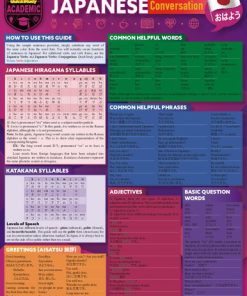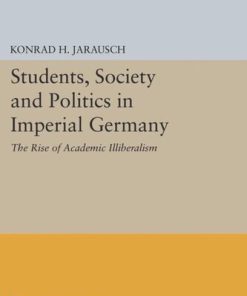Academic Freedom and the Japanese Imperial University 1868 1939 1st edition by Byron Marshall ISBN 9780520912533 0520912535
$50.00 Original price was: $50.00.$25.00Current price is: $25.00.
Academic Freedom and the Japanese Imperial University 1868 1939 1st edition by Byron K. Marshall – Ebook PDF Instant Download/Delivery: 9780520912533, 0520912535
Instant download Full Chapter of Academic Freedom and the Japanese Imperial University 1868 1939 1st edition after payment

Product details:
ISBN 10: 0520912535
ISBN 13: 9780520912533
Author: Byron K. Marshall
Byron K. Marshall offers here a dramatic study of the changing nature and limits of academic freedom in prewar Japan, from the Meiji Restoration to the eve of World War II.
Meiji leaders founded Tokyo Imperial University in the late nineteenth century to provide their new government with necessary technical and theoretical knowledge. An academic elite, armed with Western learning, gradually emerged and wielded significant influence throughout the state. When some faculty members criticized the conduct of the Russo-Japanese War the government threatened dismissals. The faculty and administration banded together, forcing the government to back down. By 1939, however, this solidarity had eroded. The conventional explanation for this erosion has been the lack of a tradition of autonomy among prewar Japanese universities. Marshall argues instead that these later purges resulted from the university’s 40-year fixation on institutional autonomy at the expense of academic freedom.
Marshall’s finely nuanced analysis is complemented by extensive use of quantitative, biographical, and archival sources.
Table of contents:
- A Note on Japanese Names and Terms
- Acknowledgments
- Introduction:
This study of the politics of university self-governance and academic freedom in prewar Japan grew out of two distinct, yet interrelated concerns. One is the problem of understanding political conflict over higher education in modern Japan. I first became interested in this as a witness to the tumult of the late 1960s when Japanese campuses, like campuses elsewhere in the world, exploded in a multilateral struggle among faculty, students, and government authorities engaged in an often chaotic and seemingly incessant search for answers to the questions, Who governs the university? To what end? A striking aspect of this conflict was…
- 1 Prologue: The Bise and Fall of Academic Freedom
On September 5, 1905, the Russo-Japanese War ended with the signing of a treaty concluded through the good offices of Theodore Roosevelt. Although the nineteen-month war had been costly for the Japanese in both human casualties and heavy taxes, peace was not welcomed with national jubilation. Instead, the news of the treaty touched off a week of widespread protests against the peace terms. The series of riots that began at Hibiya Park in front of the Imperial Palace in Tokyo constituted the most violent incidents of civil disorder Japanese cities had seen since the fall of the Tokugawa regime almost…
- 2 The Making of the Modern Academic Elite, 1868-1905
The historical antecedents of Tokyo Imperial University can be traced back well before the revolutionary changes that followed the Meiji Restoration of 1868. In terms of institutional organization and ideological orientations, however, the school—like the modern nation-state it was intended to serve—was a product of the political forces that overthrew the Tokugawa regime in 1867.
The policies of the new Meiji government toward intellectuals and higher education traced an erratic path in the first decade of the new era. This is not surprising given that power was initially in the hands of an amorphous coalition of domain lords,…
- 3 The Assertion of Academic Autonomy, 1905-1918
Interpersonal ties, shared educational backgrounds, or similar career patterns among Meiji academics by no means ensured ideological homogeneity. The Meiji academic elite was certainly not of one mind on the political and social issues facing Japan. Nevertheless, by 1905, if not before, these Tōdai academics had manifested a common identity as an intellectual elite and a consensus on the need to achieve an autonomous status for their university base. This consensus cut across disciplinary lines and political differences, and the attack by the Katsura cabinet on Tōdai law faculty was met by faculty members of different departments and various political..
- 4 The Transformation of the Academic Community, 1919-1931
The history of conflict over academic autonomy in the years following World War I cannot be adequately comprehended without recognition that a fundamental transformation was taking place within the Japanese system of higher education. The clashes between the university and the state in these years involved a new generation of academics functioning in a significantly altered institutional setting as well as a new ideological climate. It will be the purpose of this chapter to examine the institutional and intellectual developments that mediated the struggles between state and university in this period.
- 5 The Maintenance of University Autonomy, 1919-1932
The Japanese academic elite of the 1900s and 1910s, when faced with attacks on its collective interests, had displayed a remarkable capacity to put aside ideological differences, factional divisions, and interdisciplinary rivalries. During the 1920s, however, that capacity for solidarity eroded steadily. This was evident in the relations both within the faculty at Tokyo Imperial University and between it and the faculties at its sister institutions. In part, that erosion was due to internal processes that sapped the cohesive strength of the university from within, as described in the previous chapter. The other half of the story, of course, was…
- 6 The Purge of the Imperial Universities, 1933-1939
The ouster of radical social scientists from imperial universities during 1928–1930 was only a prelude to even greater losses in the 1930s. Beginning with the onset of the Depression in 1929, the controversy over naval disarmament in 1930, and the military seizure of Manchuria in 1931, anti-Western sentiments and nationalist passions against “subversive influences” and “dangerous thoughts” grew steadily more intense within Japan. Between 1930 and 1937 there was a series of political assassinations and attempts at coups by the radical Right. Political pressures on leftist activists and liberal writers grew apace. The most celebrated case of attacks on academic…
- 7 The Pacific War and Its Aftermath
The history of Japan’s imperial universities after 1941 and the emergence of a postwar academic elite during the U.S. Occupation belong properly to another book. Nevertheless, it may throw further light on the significance of the prewar events to take brief note here of what became of the major figures from these prewar struggles.
Kawai Eijirō fought the charges of subversion through four grueling years of police investigations and court hearings. He was actually acquitted at his first trial in October 1940, but the government procurators won a reversal in the Tokyo Court of Appeals in October 1941. Although Kawai…
- APPENDIX Tōdai and the Production of National Elites
- Glossary and Biographical Notes
- List of Works Consulted
- Index
People also search:
academic freedom in china
academic freedom and tenure
academic freedom history
academic freedom in the united states
the academic freedom alliance
You may also like…
Education & Teaching
Education Studies & Teaching - School Education & Teaching
Education Studies & Teaching - Higher & Further Education
Academic Writing for University Students 1st Edition by Stephen Bailey 1000480267 9781000480269
Uncategorized
The University Success Handbook 1st Edition by Brian K. Williams 1517809754 9781517809751
Languages - Japanese Language Reference
Japanese Conversation Quickstudy Academic 1st Edition Misa Dikengil
Uncategorized
Uncategorized
Places of Silence, Journeys of Freedom: The Fiction of Paule Marshall Eugenia C. Delamotte
History - Asian History
Japan Occupied: Survival of Academic Freedom 1st Edition Ruriko Kumano











